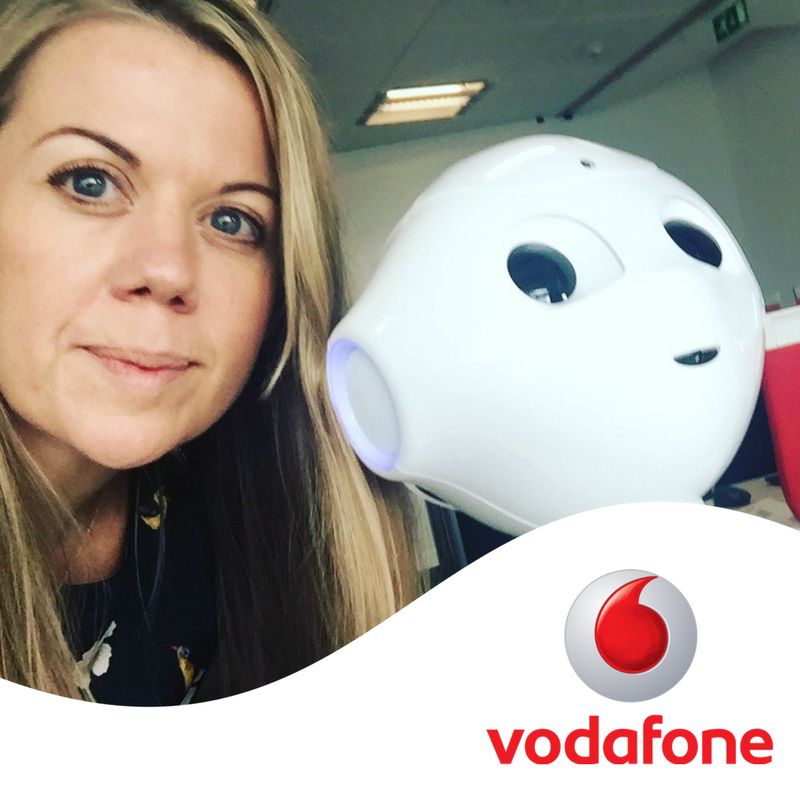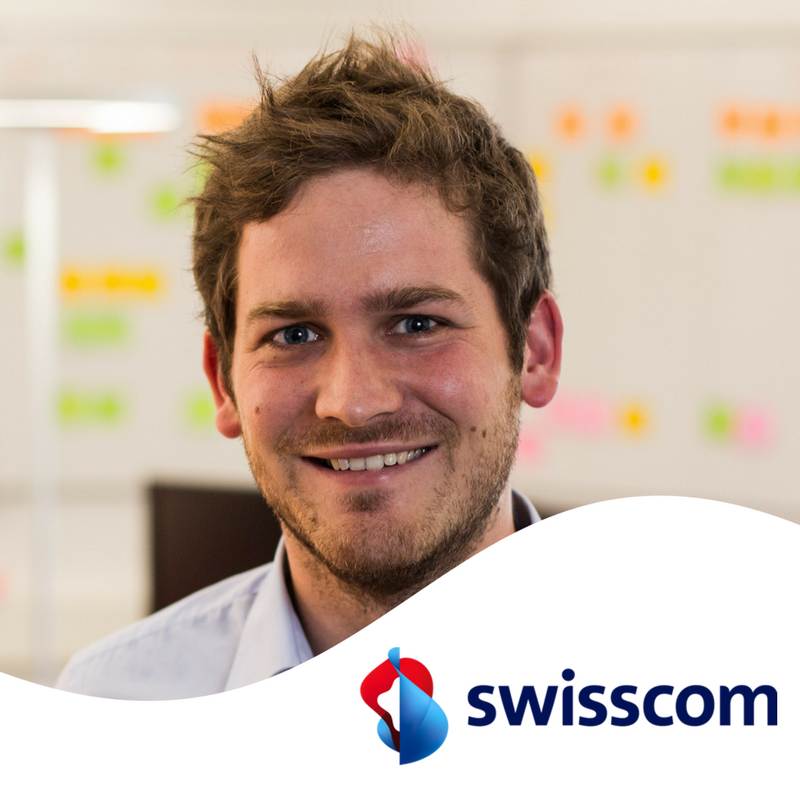The telecommunications industry is facing major disruption. That presents big challenges – and opportunities – for telcos.
So how are telcos transforming themselves? At Innov8rs Madrid, we heard from three top telecommunications companies, all of whom take a very different approach to innovation.
Telefonica: Leveraging Data For Bigger Impact
“It’s not enough to demonstrate the impact you are having, or you may have, in the company. You have to demonstrate it in the language the company speaks and understands. Then they will listen to you.”
Susana Jurado Apruzzese
Head of Innovation Portfolio at Product Innovation, Telefónica
 Telefonica operates in 17 countries and is present in 24, and has an average of 127 thousand employees. In 2012 they began using Lean, and made it core to the way they approached innovation. They also launched an employee intrapreneurship program, which was so successful it was written up in a case study and became their Lean Elephants framework.
Telefonica operates in 17 countries and is present in 24, and has an average of 127 thousand employees. In 2012 they began using Lean, and made it core to the way they approached innovation. They also launched an employee intrapreneurship program, which was so successful it was written up in a case study and became their Lean Elephants framework.
But the better you get at intrapreneurship, the more difficult the challenges you face become. Simply having a successful framework and intrapreneurship program wasn’t enough. They realized they needed to be able to better measure the present and future business impact of innovation, in a way that made it accessible and understandable to leadership. They also needed a better way to scale up their ventures and make innovation portfolio decisions based on data.
The Data Dashboard
They created a dashboard with four blocks. The first holds data about their ventures: team size, budget, stage, and so on. The second holds facts: proof of concept, revenues, customers. The third block is forecasting: potential time to market, potential business impact, future revenue. But it’s the fourth block that’s the most interesting.
The fourth block measures probability of success of these ventures, using three indexes. The first is the maturity index: the more mature the venture, the less uncertainty exists around it. The second is the risk index: how much risk is a venture still facing, and how is that risk being addressed. The third is the transfer index: if we transfer this venture to a business unit for commercialization, what is the likelihood if it being successful? In other words, how likely is it to be able to scale up?
Predicting Scalability
To measure the scalability, they use AI. They collect seven pieces of data about the venture – support from sponsorship, feasibility, differential tech, and so on – feed it to the algorithm, and get an idea of how likely it is that this venture will scale successfully. From there, they can change the data to see how it affects the likely success. This also helps them decide where to allocate funds.
“Patience is not one of our virtues. But think of Netflix – it took them ten years until they got to the video streaming value proposition. Sooner or later, you have to show that you are creating impact for the company – not just the impact you are creating right now, but also the impact you can create in the future.”
Vodafone: Bringing Startups On Board
“How can we create win-win partnerships for both Vodafone and the startup that will drive value to our customers, improve our business operations, and help affect digital transformation?”
Laura Turkington
Senior Manager – Innovation at Vodafone Group
 Vodafone is a large mobile operator, second only to China Mobile. They operate in 25 countries, have partner markets in 46, and serve half a billion customers. Vodafone’s history of innovation includes a ventures arm and an incubator, but they recently switched their focus to better collaborating with startups.
Vodafone is a large mobile operator, second only to China Mobile. They operate in 25 countries, have partner markets in 46, and serve half a billion customers. Vodafone’s history of innovation includes a ventures arm and an incubator, but they recently switched their focus to better collaborating with startups.
Vodafone had tried working with startups in the past, and had disappointing results. They were speculating rather than responding to live business challenges, and placing their bets in a small pool of startups. Additionally, the company’s own procurement processes were getting in the way of successful collaboration. Just 18 months ago, they set up a small team of ‘matchmakers’ to refine their processes and act as a conduit for external startups to enter the larger organization.
New Model, New Approach
First, the team seeks out areas of the business that are both open to startups and have real live business challenges. Before they will make a startup match, they qualify the business need and make sure all required stakeholders are involved, have a budget, and have decision-making power.
The team then taps their scouting partners, who have access to global networks of startups. Rather than letting startups come to them, and ending up with a ‘petting zoo’ of startups being pushed out to the business, they seek out startups that will be the best fit for the business need.
The team also fought hard to revise their procurement process which had been a huge hindrance to startups in the past. Instead of paying out in 180 days, eligible startups now get paid in just 21 days – far more appealing, and necessary, for a startup. Vodafone also lightened up many of their previously heavy contractual terms, so it was easier for them to engage startups in the first place.
The Directory and The Dig
The team launched a global directory of startups to make it easier for business lines to find and engage startups. So a team in Spain working on a blockchain project, for example, could easily access the directory to see what their counterparts in Germany did, who they worked with, and how well the startup performed.
The team also launched The Vodafone Dig to drive paid pilots that could scale, and to infuse excitement about working with startups from the top down. They formed several different functional groups across the organization, comprised of 250 leaders from HR, enterprise sales, marketing, finance, and so on, and asked them what their biggest challenges and needs were around disruptive technologies. With scouting partners, they then compiled a list of 100 startups, qualified and whittled that down to a top 20, who have been presenting to the leadership since. The Vodafone Dig has resulted in ten live projects so far – and has played a huge role in creating a more experimental culture, and driving interest and momentum across the organization.
“Our role is enabling, and I think there’s a need for that in a large organization. There are so many people that are doing cool, amazing, innovative things and if we in any way can help facilitate that exchange, we know we drive value.”
Swisscom: Establishing A ‘Garage’ Culture With Kickbox
“I’m a big fan of project-based learning. I believe if you do it and not just read a book, it helps much more, and that’s the way we try to transform people – one person at a time.”
David Hengartner
Head of Swisscom Kickbox
 Swisscom is the largest Swiss telecom, with more than 20 thousand employees in Switzerland and Italy. Their innovation journey was inspired, in part, by Steve Jobs referring to the original Macintosh team as “a group of people going, in essence, back to the garage, but in a large company.” In order to create new, disruptive businesses for Swisscom, they decided to create what they call a “No bla, just do” startup culture within the organization, where employees learned how to validate, build, and scale their own startup by actually doing it.
Swisscom is the largest Swiss telecom, with more than 20 thousand employees in Switzerland and Italy. Their innovation journey was inspired, in part, by Steve Jobs referring to the original Macintosh team as “a group of people going, in essence, back to the garage, but in a large company.” In order to create new, disruptive businesses for Swisscom, they decided to create what they call a “No bla, just do” startup culture within the organization, where employees learned how to validate, build, and scale their own startup by actually doing it.
Kickbox Pilot Takes Off
They began with a three-month pilot of Adobe Kickbox – an innovation process, packaged in a self-contained kit, that Adobe developed for its own use and then open-sourced for everyone to use and modify for their own needs.
The pilot took off – about 10 percent of the Swisscom workforce wanted to take part. It generated 50 ideas, and they handed out as many red boxes as their meagre budget could handle. The red box, intended to help intrapreneurs validate their idea, included a small budget on a pre-paid credit card, instructions and tools, and the ability to use 20 percent of their time for two months on their idea.
From there, Swisscom customized Kickbox into a revolutionary “open innovation” ecosystem connecting corporates, startups, investors, universities and startup service providers. First they added a blue box, with a larger budget and 4-6 months worth of time, so intrapreneurs could develop their ideas and start selling to customers. Anyone who made it through this stage got a gold box, with a large corporate investment and 100 percent time to actually build the idea into its own startup.
The Kickbox Digital Platform
After about a year and a half, the program had grown so much it required a digital platform to manage it. Swisscom Kickbox now includes a directory of all active projects, similar to Kickstarter, that shows what funding stage each project is in. It also includes a Startup-As-A-Service marketplace where intrapreneurs can find services from hand-picked freelancers and startup service providers. These services range from legal advice, marketing and growth hacking, prototyping, design, media production and business development, all the way up to the web/ app development of a minimum viable product.
Impact and Growth
Several businesses have emerged from this process: Drone Guard, a project that provides drone defense for critical infrastructure and events; Swisscomat, a project that has turned unused phone booths into tech-gadget vending machines; and Noow, which uses blockchain technology to deliver digital artwork via a Swisscom television app.
Building further on the success of Kickbox, Swisscom has launched two other initiatives. KickAngel, a bottom-up enterprise crowdfunding platform, gives employees corporate money to invest in projects on the platform and will eventually become a token system where employees can invest their bonuses and see a return. And they engaged their corporate responsibility team to launch KickCall, in partnership with the World Wildlife Foundation and ImpactHub, to generate and develop ideas tailored to the sustainability space.
“I want to build a whole innovation ecosystem. Connecting corporates, startups, students, investors, service providers, enabling joint ventures, helping them share things – that’s the future.”

